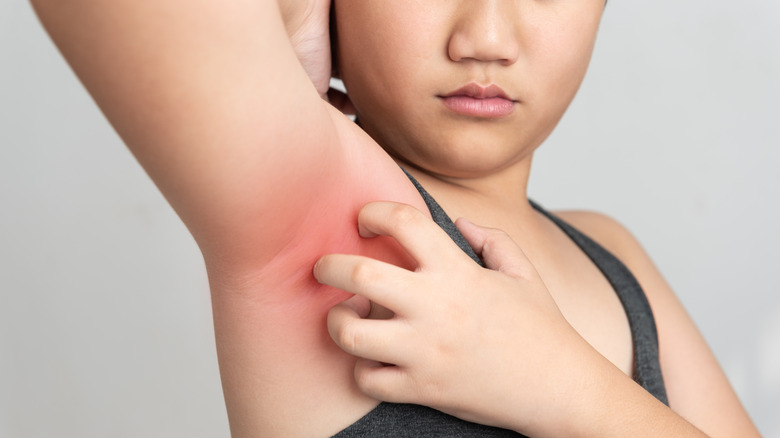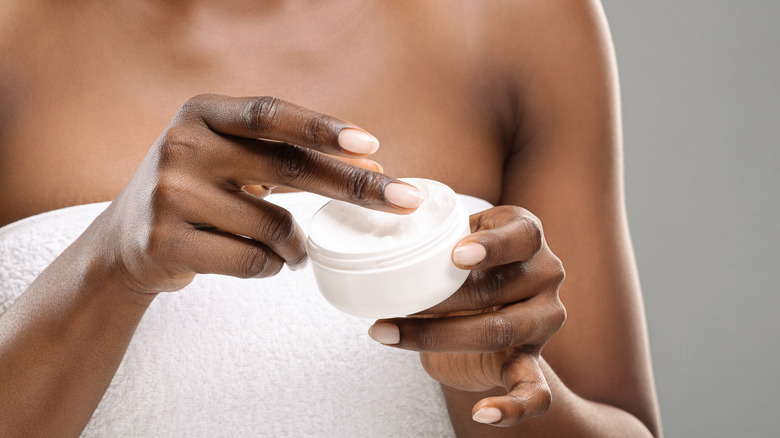What Does It Mean If You Have Inverse Psoriasis?
If you've noticed the development of shiny, smooth lesions along various skin folds on the body, this may be a symptom of a condition known as inverse psoriasis (via Verywell Health). Estimated to affect anywhere between 3% to 36% of people, inverse psoriasis can be difficult to diagnose due to the fact that it is often mistaken for alternate skin conditions such as contact dermatitis or a bacterial or fungal infection, according to a 2019 review published in Clinical, Cosmetic and Investigational Dermatology. These lesions may be purple, brown, or a darker shade of one's skin tone and often appear red on white skin (via National Psoriasis Foundation).
Unlike plaque psoriasis, inverse psoriasis lesions are not scaly in texture. Because they often develop on the underside of the breasts, armpits, or groin area, the moisture retained in those skin folds prevents these patches from becoming raised and dry (via National Psoriasis Foundation). Alternate areas of the body that can also be affected include the backsides of the ears or between the buttocks (via Verywell Health). Inverse psoriasis is also not uncommon in babies, who often experience it along the diaper region (via Clinical, Cosmetic and Investigational Dermatology). Let's explore some of the causes associated with this condition and how to manage it.
Managing inverse psoriasis
According to the National Psoriasis Foundation, stress, skin injury, alcohol or tobacco use, the starting and stopping of certain medications, and friction between deep skin folds may all lead to a flare-up of inverse psoriasis. While there are no specific scientific means by which to diagnose a case of inverse psoriasis, a thorough evaluation of one's medical history and visual skin exam by a doctor will help rule out any alternate skin conditions such as ringworm, skin fungus, or certain bacterial infections (via Verywell Health). In addition, doctors will also look for symptoms of alternate types of psoriasis, such as plaque psoriasis of the scalp or nail psoriasis.
Treatment options are available to help relieve the pain and appearance of symptoms. Stress management, oatmeal baths, and avoidance of triggers may prove helpful for more mild cases of inverse psoriasis (via Verywell Health). For more severe cases, topical treatments or oral medications may be issued, particularly in the event of secondary bacterial or fungal infections. In some cases, injectable drugs may also be used to help treat the condition.
To help manage symptoms, experts at Verywell Health suggest wearing loose-fitted clothing to help reduce friction. In addition, the use of talcum powder or baking soda along skin folds can help keep the area dry. To keep the area free of sweat, wash the skin with cold water and mild soap, and be sure to pat dry the area as opposed to wiping harshly with a towel. Lastly, be sure to speak with your dermatologist to explore additional treatment options that are right for you.


